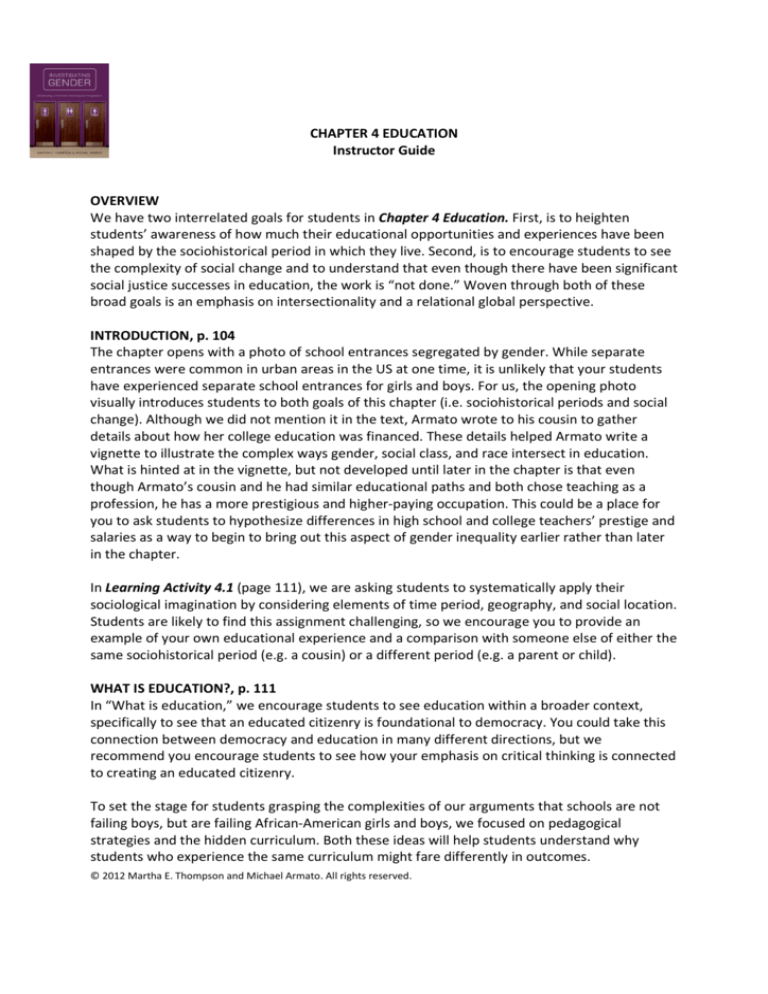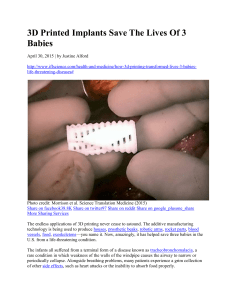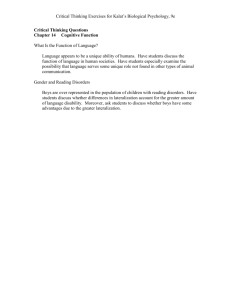
CHAPTER 4 EDUCATION
Instructor Guide
OVERVIEW
We have two interrelated goals for students in Chapter 4 Education. First, is to heighten
students’ awareness of how much their educational opportunities and experiences have been
shaped by the sociohistorical period in which they live. Second, is to encourage students to see
the complexity of social change and to understand that even though there have been significant
social justice successes in education, the work is “not done.” Woven through both of these
broad goals is an emphasis on intersectionality and a relational global perspective.
INTRODUCTION, p. 104
The chapter opens with a photo of school entrances segregated by gender. While separate
entrances were common in urban areas in the US at one time, it is unlikely that your students
have experienced separate school entrances for girls and boys. For us, the opening photo
visually introduces students to both goals of this chapter (i.e. sociohistorical periods and social
change). Although we did not mention it in the text, Armato wrote to his cousin to gather
details about how her college education was financed. These details helped Armato write a
vignette to illustrate the complex ways gender, social class, and race intersect in education.
What is hinted at in the vignette, but not developed until later in the chapter is that even
though Armato’s cousin and he had similar educational paths and both chose teaching as a
profession, he has a more prestigious and higher-paying occupation. This could be a place for
you to ask students to hypothesize differences in high school and college teachers’ prestige and
salaries as a way to begin to bring out this aspect of gender inequality earlier rather than later
in the chapter.
In Learning Activity 4.1 (page 111), we are asking students to systematically apply their
sociological imagination by considering elements of time period, geography, and social location.
Students are likely to find this assignment challenging, so we encourage you to provide an
example of your own educational experience and a comparison with someone else of either the
same sociohistorical period (e.g. a cousin) or a different period (e.g. a parent or child).
WHAT IS EDUCATION?, p. 111
In “What is education,” we encourage students to see education within a broader context,
specifically to see that an educated citizenry is foundational to democracy. You could take this
connection between democracy and education in many different directions, but we
recommend you encourage students to see how your emphasis on critical thinking is connected
to creating an educated citizenry.
To set the stage for students grasping the complexities of our arguments that schools are not
failing boys, but are failing African-American girls and boys, we focused on pedagogical
strategies and the hidden curriculum. Both these ideas will help students understand why
students who experience the same curriculum might fare differently in outcomes.
© 2012 Martha E. Thompson and Michael Armato. All rights reserved.
In Research Example 4.1 (pages 114-5), students read about women’s experience of online
learning. We chose this reading because it allowed us to address ways in which technology can
be used effectively in the classroom. Our thinking was that you would be able to use this
research example as a backdrop for many different related topics, such as a lecture on gender
and technology, strategies to interrupt microinequalities in the classroom, or on the chilly
climate. We selected Harvey Milk High School for Box 4.1 The Power of Many (page 116) as a
way to get students thinking about educational programs that fall outside traditional public
education and why parents and children sometimes eschew “free” or established public
education for alternatives. We selected bell hooks for Box 4.2 The Power of One (page 117) as
another way to highlight the connections between education and democracy. Learning Activity
4.2 (page 118) gives students a chance to put their critical thinking skills into practice and, we
hope, will enhance their understanding of a feminist sociological approach.
FOCAL POINT: ARE SCHOOLS FAILING BOYS?, p. 118
This section opens with a photo of an African American boy doing schoolwork. We chose this
photo to visually challenge a common stereotype of African American boys as disrupting rather
than participating in education. The focal point on the oft-cited concern of schools failing boys
reveals the complexity of gendered disparities and the continuing significance of race and class
in education. This section is the first time in the text that students will see an increasingly
complex quantitative analysis—first by gender, then gender and race, and finally gender, race,
and social class. Test scores were not our first choice for illustrating the intersections of gender,
race, and class, but when we saw available data on different aspects of education, we decided
on test scores because of the richness of the data. We brought in The National Center for Fair
and Open Testing in Box 4.3 (page 119) to raise students’ awareness of the limitations of
standardized tests, even though we could not go into detail about this topic in the text.
Learning Activity 4.3 (page 124) is another challenging assignment, but we thought students
should have the opportunity to engage in their own analysis of an educational trend, enabling
them to replicate, extend, or challenge the analysis in the textbook.
WHAT DO PERFORMANCE TESTS REVEAL ABOUT GENDER AND EDUCATION?, p. 124
Highlighting the complexities of education beyond test scores gives students a chance to
consider educational outcomes, different models of education, and the myriad ways that social
inequalities are maintained and challenged in educational institutions. In Learning Activity 4.4
(page 128), students have another chance to apply their critical thinking skills to local activism
in education.
CONCLUSION, p. 128
The conclusion recaps the main points of the chapter from the intersections of gender, race,
and class; changes in educational curricula over time; and education in a global economy.
© 2012 Martha E. Thompson and Michael Armato. All rights reserved.
CLASSROOM ACTIVITIES
Learning Activities
• Assess the skills your students need to develop and then assign one of the learning
activities in Chapter 4
4.1 Gender and Your Educational Experience (skill: link autobiography to a broader
social pattern)
4.2 Is That Feminist Education? (skill: find a definition and compare and contrast)
4.3 Analyzing a Gender Trend in Education (skill: find, use, and interpret data)
4.4 Local Activism in Education (skill: evaluate an organization in terms of social justice)
• Provide an overview of the skill and its importance.
• In whole class, small groups, or pairs have students share their assignment.
• Have volunteers share the highlights of their work.
• Lead a whole class discussion, connecting their work to the relevant chapter section.
Research Example
• Assign one of the suggested articles annotated at the end of the chapter or another
research article.
Johnson, Brooke. 2010. “A few good boys: Masculinity at a military-style charter school.”
Sleeter, Christine E. and Carl A. Grant. 2011. “Race, class, gender and disability in current
textbooks.”
•
•
Ask students individually, in pairs, or small groups to analyze all or a portion of the
selected article following the format of the research example (e.g. description of the
research issue and methods, findings, contributions, reflection, and conclusion).
Lead a whole class discussion of the ways in which the research example reinforces,
extends, or challenges the arguments presented in the chapter. Ask students to provide
evidence from the reading to support their argument.
Imagery
Suggested Documentary:
Playing Unfair (clip: Taking the field: The impact of Title IX) or choose a film clip from a
Hollywood film. For a resource on the “best movies about education,” see
http://bestonlineuniversities.com/2011/25-best-movies-about-education-ever-made/.
•
•
Ask students to look at the photo of a segregated school entrance at the opening of the
education chapter or the boy doing schoolwork in the focal point section, or bring in an
image, video clip, advertisement, commercial, or film clip of your choosing that is
related to the chapter. To help students develop their observational skills, ask them to
describe what they see. Then ask each student to write a short paragraph evaluating the
significance of the image as it relates to the topic of the chapter.
Have volunteers read their paragraph and then discuss what they have learned.
© 2012 Martha E. Thompson and Michael Armato. All rights reserved.
•
Recap the discussion and connect to what the imagery reveals about gender and
education.
Power of One and Power of Many
• Assign students to find out more about bell hooks (Power of One) or Harvey Milk High
School or ask students to nominate someone who is an educator or education activist
with a focus on gender or nominate an organization expanding opportunities for people
who have limited educational resources. The individuals or organizations can be local,
national, or global.
• Ask students to share a brief summary of the individual or organization’s work and their
significance in advancing social justice with regard to gender and the topic of the
chapter.
• Guide a discussion of what students have learned about educational activism,
encouraging students to see linkages between education and democracy.
Discussion Questions
Select one of the discussion questions found in Chapter 4 Education. For instance, “What is the
relationship between educational institutions and other social institutions?” To address this
question:
• Select a concrete controversial topic in education, such as prayer in schools,
creationism, abstinence-only education, No Child Left Behind Act, firing teachers
when their students do not perform.
• Find a public opinion poll about the topic (e.g. for prayer in schools and by using
clickers, an anonymous questionnaire, a show of hands or asking people to move
into corners of the room have students indicate “where they stand” (use the
answer categories offered by the public opinion poll).
• Then ask them to indicate how often they attend religious services, their
religious affiliation, and their political party affiliation.
• Once each student has completed her/his survey or the data are compiled, ask
students to hypothesize a relationship between gender, attendance at religious
services, and religious affiliation.
• Share with them the data from a national opinion poll, bringing out the
relationship between individual opinions and social location. You can use this
exercise to demonstrate how an outside institution (religion) influences opinions
about education.
© 2012 Martha E. Thompson and Michael Armato. All rights reserved.









